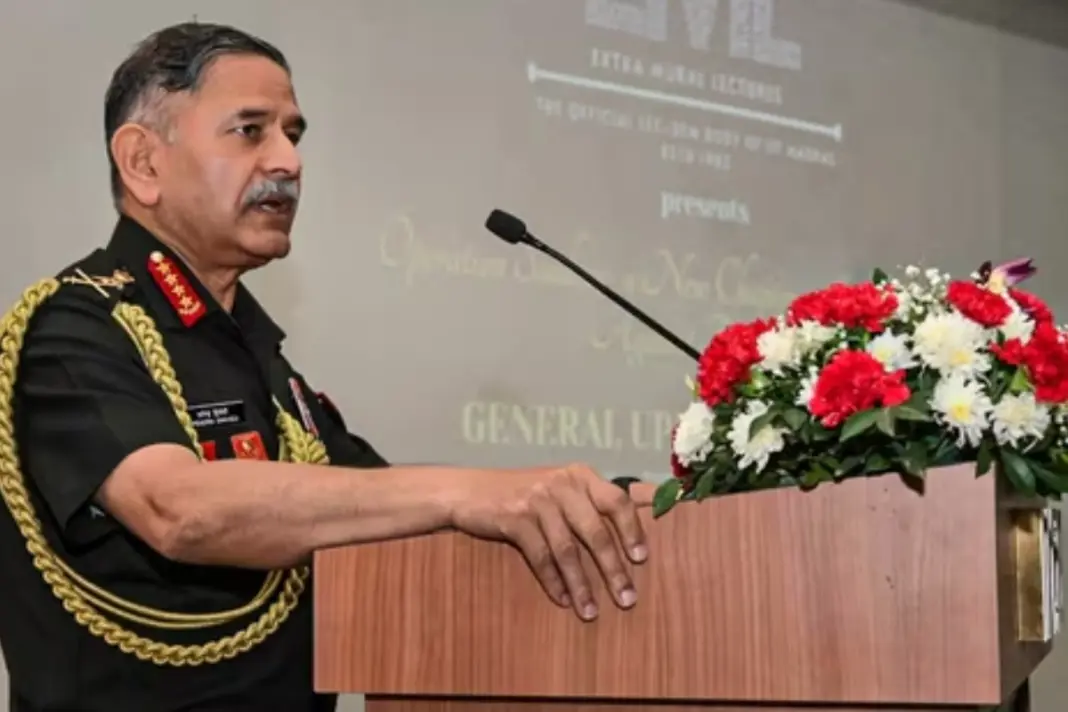In answer to the terrorist attack in Pahalgam on April 22, 26 civilians were brutally killed by militants backed by Pakistan. India launched Op Sindoor on May 7, 2025. It was a well-thought-out military response. The operation targeted nine terror infrastructure sites in Pakistan and Pakistan-occupied Kashmir. The goal was to destroy the training grounds and supply hubs of terror groups like Jaish-e-Mohammed and Lashkar-e-Taiba. India’s government and military said the strikes were exact and did not escalate the situation. They also said they purposely avoided hitting Pakistani military or civilian targets to limit the damage to other people.
A War in the Grey Zone Like Chess
Chief of Army Staff General Upendra Dwivedi used chess to explain the action and stress that it was a “grey zone” conflict. Operation Sindoor was different from regular war because it involved planned moves and counter-moves, and it wasn’t easy to see how the enemy would respond. This meant that strategic accuracy and restraint were needed. This strategy let India deal a heavy blow to the terror infrastructure backed by Pakistan while carefully handling the situation to keep a full-scale war from happening.
Smart intelligence guides precise strikes
Operational ethics were very important in how Operation Sindoor was carried out. Multiple intelligence agencies helped the Indian military find and confirm the locations of nine major terrorist camps. They then used advanced weapons like BrahMos missiles and advanced air defence systems to launch precise attacks on these camps. This intelligence-led operation made sure that there was little damage to civilians and no deaths on the Indian side. The action showed how well three different military services could work together. It was also helped by strong government support and clear political leadership. Before, Rajnath Singh, the defence minister, said, “Enough is enough,” giving the armed forces full operational freedom to react decisively.
India’s defence and Pakistan’s response
After the Indian attacks, Pakistan responded with attacks using drones and missiles on Indian military bases, civilian sites, and even holy buildings. However, India’s integrated air defence system stopped these strikes, showing that India is more advanced in both technology and strategy. The fact that the Indian military kept control of its airspace shows that the action was successful in limiting Pakistan’s ability to respond.
A Game of Checkmates Against Terrorist Networks
General Dwivedi also made fun of Pakistan’s story of victory, saying that India’s win was like a military chess game ending in “checkmate.” India’s military strength and tactical skill were on full display in this operation. It also sent a strong message that terror networks supported by Pakistan would face precise, timely, and effective responses. It was a change in how India dealt with terrorism across international borders. They now prefer a more nuanced military strategy that focuses on “grey zone warfare” and keeping things from getting worse while still reaching their strategic goals.
In conclusion, India’s response is marked by precision and restraint
As an example of India’s ability to respond with accuracy and restraint, Operation Sindoor destroyed terror infrastructure without starting a bigger war. The head of the Indian Army said in public that there is no more proof is needed to show that Pakistan-backed terrorism networks have been destroyed. This was a clear statement of India’s strategic and military superiority in this “grey zone” conflict.


